

Matt Campbell
2026 Hyundai Tucson Hybrid review
2 Hours Ago
It's still the most powerful and quickest Range Rover ever built, but it's trumped by the German onslaught of twin-turbo monster trucks.
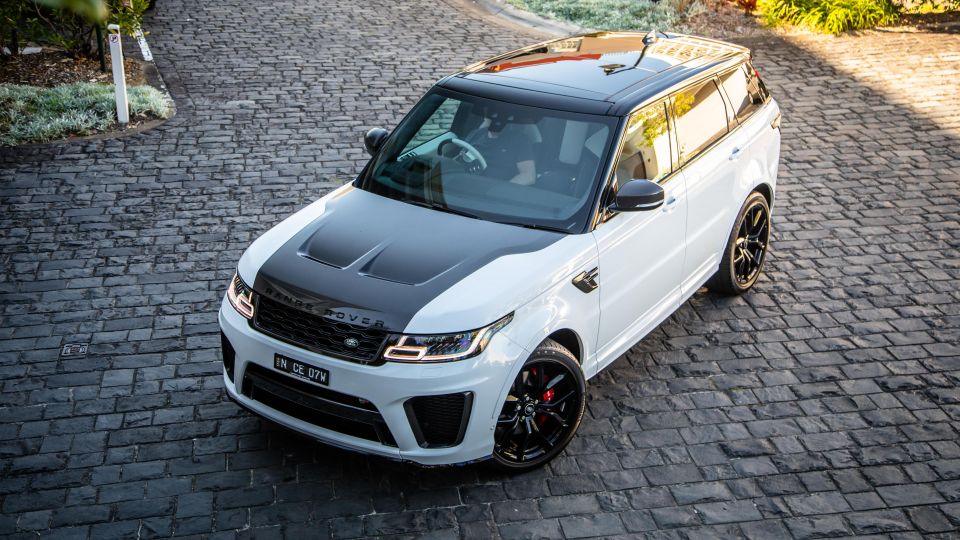
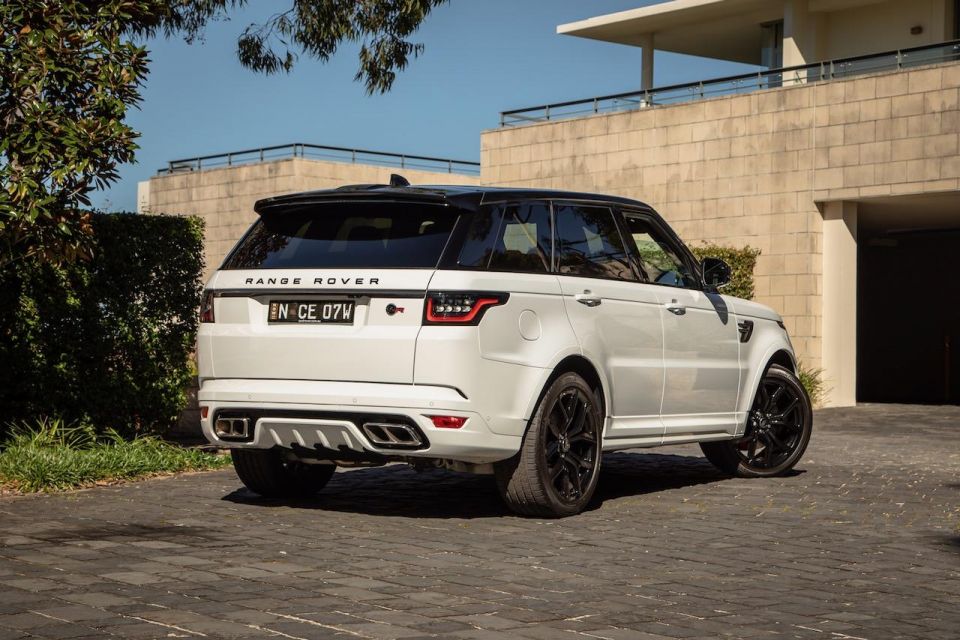

Senior Road Tester
New from
$273,906
excl. on-roads

Senior Road Tester
New from
$273,906
excl. on-roads


Senior Road Tester
New from
$273,906
excl. on-roads

Senior Road Tester
New from
$273,906
excl. on-roads
Quickly see how this car stacks up against its competition. Select any benchmark to see more details.
Where expert car reviews meet expert car buying – CarExpert gives you trusted advice, personalised service and real savings on your next new car.
You’re likely looking at the last of a breed with the Range Rover Sport SVR Carbon Edition, as rules and regulations tied to emissions reduction take hold and effectively close the book on V8 motors.
It’s not all doom and gloom, because the guys and gals at Land Rover’s Special Vehicle Operations division are already cooking up something even quicker and more powerful. It may not have an engine at all in the traditional sense, but we’ll just have to wait and see on that one.
For as long as I remember there have always been go-fast versions of the Range Rover Sport. That’s the very essence of why the Sport was created back in 2005.
While I didn’t get the opportunity to get behind the wheel of the first-gen car, I did end up going flat-out on a runway somewhere in the Midlands in a second-generation car.
When the bona-fide Sport SVR first landed in showroom floors in 2015, its 5.0L supercharged V8 boasted 410kW and 681Nm.

The latest and greatest Range Rover Sport SVR Carbon Edition tested here goes all-in with an engine lifted straight out of the hardcore Jaguar F-Type P575 R, sending 423kW of power and 700Nm of torque to all four wheels.
Naturally, it’s the fastest and most powerful Land Rover ever, and makes more noise than a Challenger 2 Battle Tank the instant you give the throttle a prod.
There’s no mistaking the SVR Carbon Edition for any other Range Rover Sport; it’s about as subtle as the proverbial sledge hammer thanks to a beautifully-crafted carbon bonnet with integrated cooling vents either side of centre.
Directly below is an equally-stunning carbon engine cover, as well as plenty more telltale signs of SVR status if you happen to miss the subtle badging. The huge 22-inch lightweight alloy in gloss black are another giveaway, as are the quad pipes out back.
It’s not cheap. In fact, it’s significantly more expensive than the ‘regular’ SVR, and stratospherically dearer than the Jaguar F-Pace SVR, which uses the same engine detuned to make slightly less power.
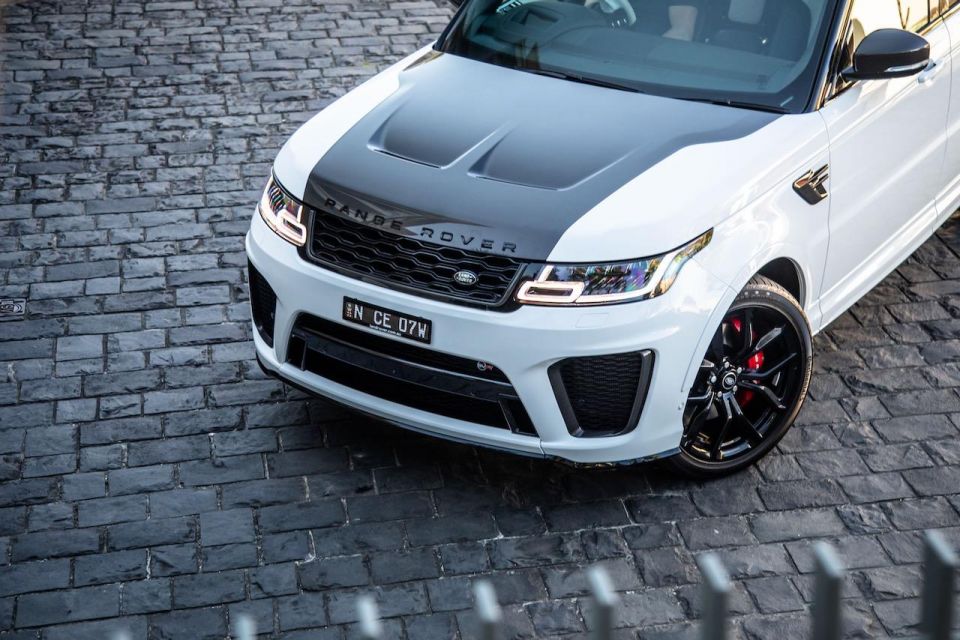
This is where is gets a wee bit scary. Remember, we expect the all-new third-generation Sport to arrive some time in 2022, bringing with it an entirely new design.
That means the car you see here could soon look distinctly old-hat – or it could turn into a classic. Who knows.
You’ll need to stump up $275,803 before on-road costs and any options you might desire.
No question the Carbon Edition makes a statement (in Estoril Blue, Sanguinello Orange, or Firenze Red) but so does the standard SVR at $246,146 before on-roads.
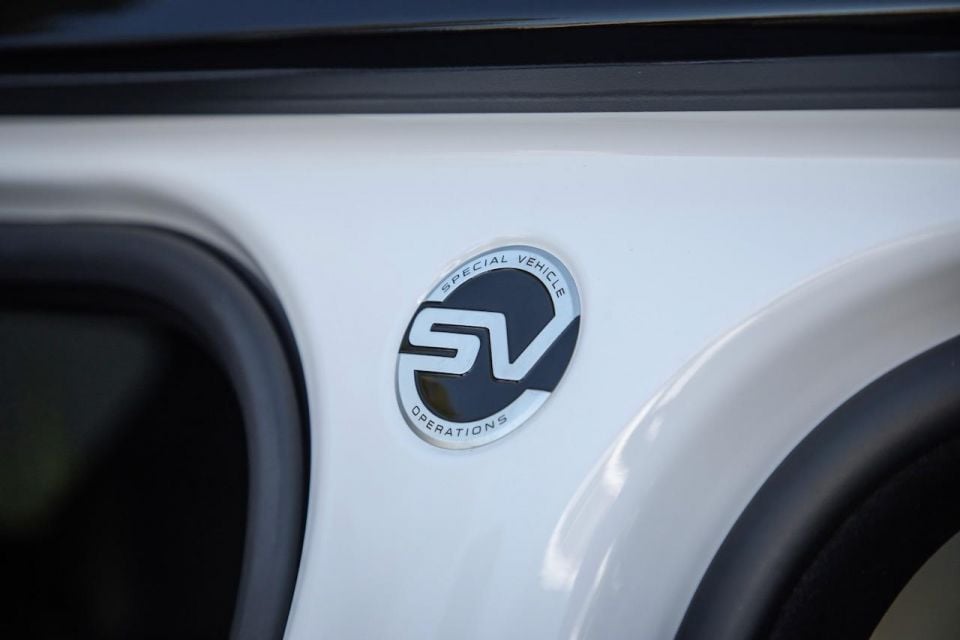
If you don’t mind your SUV wearing a Jaguar badge there’s the F-Pace SVR for $142,294 before on-roads – and yes, it’s got the same supercharged V8 and all-wheel drive to boot. But it won’t go through rivers in the same way the Range Rover Sport can.
There’s a slew of go-fast family chariots to rival the SVR Carbon. The Audi RSQ8 also gets a twin-turbo V8 with mild-hybrid technology, more power and torque (441kW and 800Nm), but a $208,500 price.
BMW steps into the ring with its X5 M Competition from $212,900 with 460kW and 750Nm from its 4.4-litre twin-turbo V8 power plant.
Mercedes-AMG has the GLE63 S priced at $230,400 and packing a twin-turbo V8 making 450kW and 850Nm.

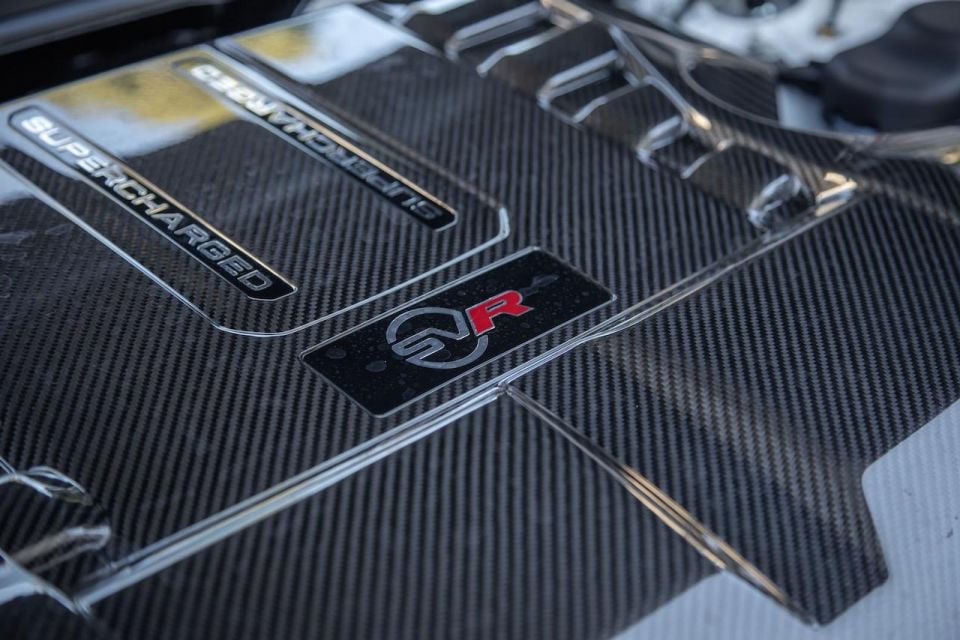
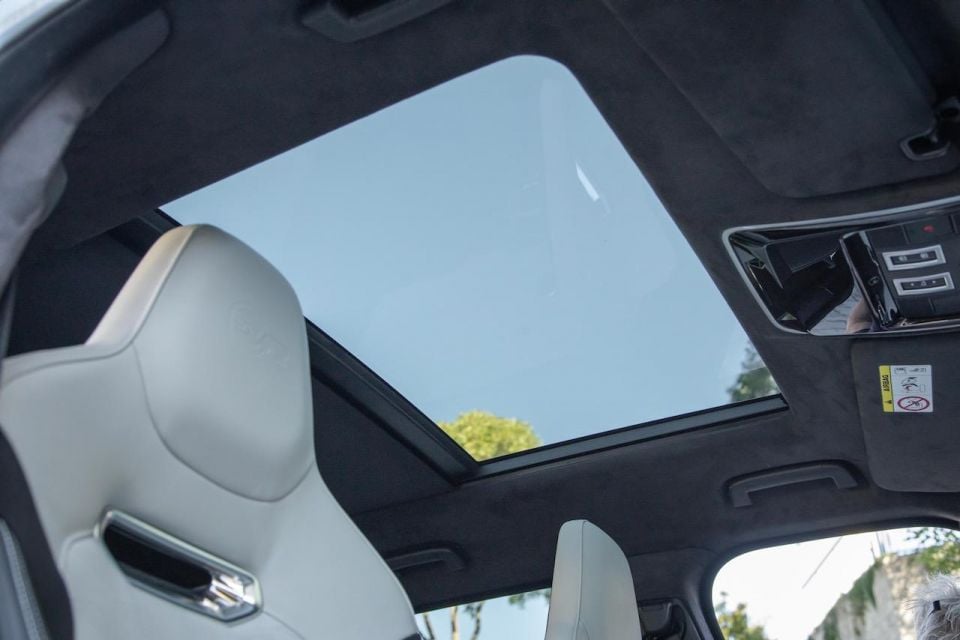
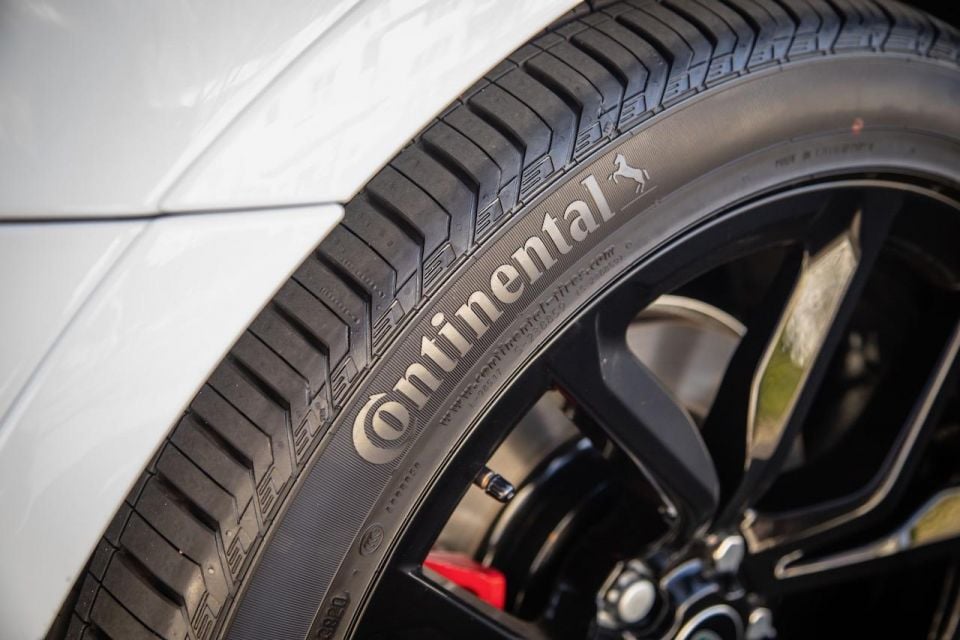
Buy your new car without the stress. It's fast, simple and completely free.

Great service from Travis and team, second time I have used this business would not hesitate to recommend them to anyone
Craig C.
Purchased a Ford Ranger in Sunshine Coast, QLD
CarExpert helped Craig save thousands on his Ford Ranger, now let us save you on your next new car.
Find a dealFortunately, your Range Rover Sport SVR Carbon Edition comes loaded with luxury kit, such as:
Our Fuji White tester was also fitted with a few options, including:
Those options bump the price to $284,967 before on-roads in this instance.
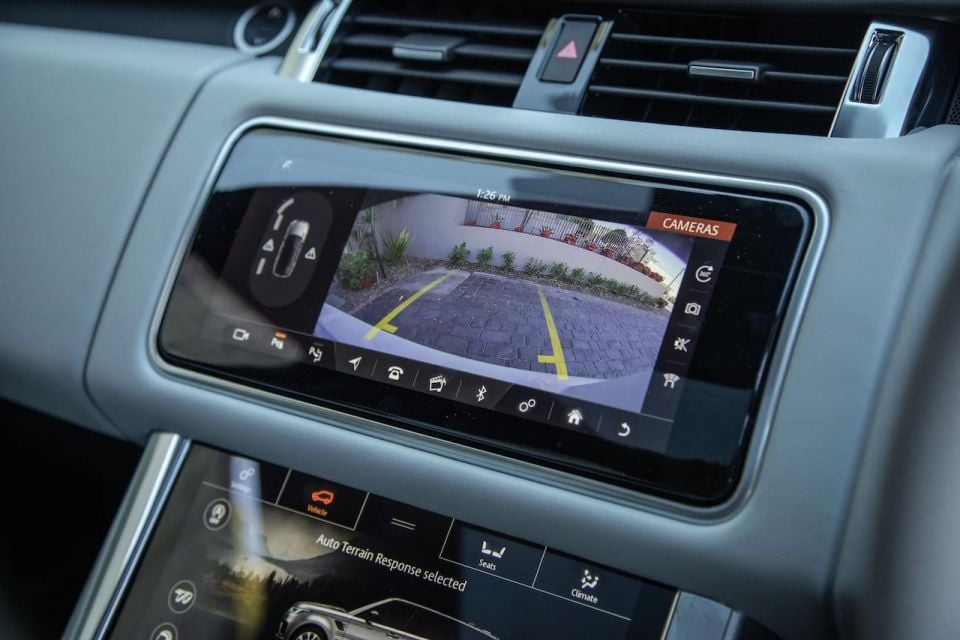
The Range Rover Sport has never been crash tested by ANCAP or Euro NCAP, though the Sport is built on the same platform as the full-fat Range Rover, which was awarded five stars in 2013 with a cumulative score of 36.19 out of 37 points.
Our SVR Sport tester was equipped with a raft of active and passive safety features, including:

The Range Rover Sport SVR is also fitted with a range of off-road and stability systems in addition to its standard four-wheel drive with twin-speed transfer box. They include:
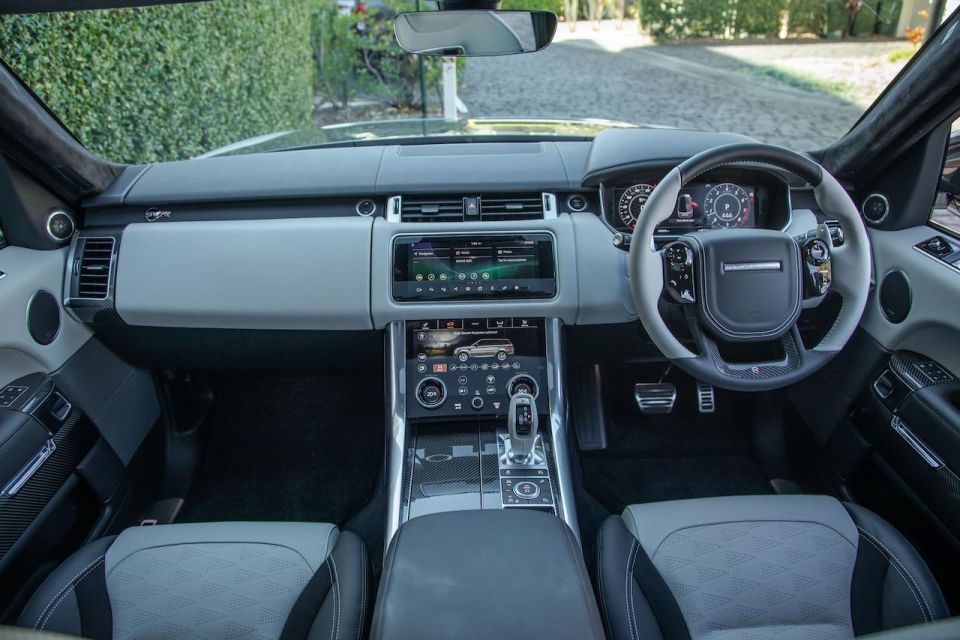
While it’s not the most contemporary cabin, it remains both sumptuous and modern enough.
Despite its status as the fastest and most powerful Range Rover ever, the SVR Carbon Edition is still a dignified vehicle inside, devoid of the bling found in most of its rivals.
It wouldn’t be an SVR Carbon Edition without a pair of heavily-bolstered front leather buckets (they’re similar out back), and plenty of shiny carbon-fibre trim bits. It’s tasteful and fits the bill perfectly.
The brightwork is used sparingly, but it’s real metal and therefore quite tasteful against the leather trim and soft-touch materials.



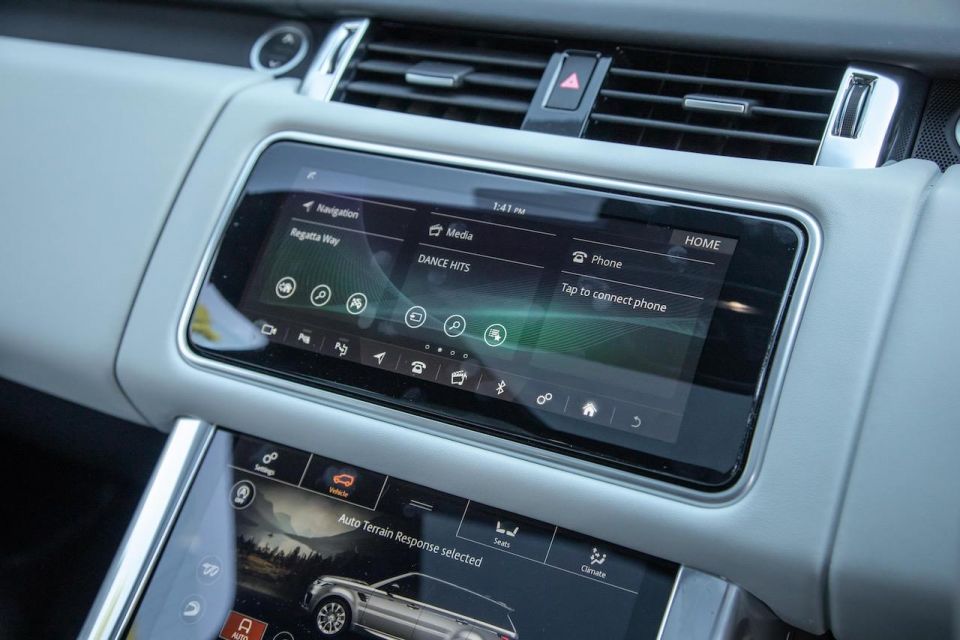
There are three large screens, including two clear touchscreen units as part of the now-superseded Touch Pro Duo system. They’re nicely integrated and responsive to the touch, with a few key shortcut buttons and dials to make life easier.
That said, just knowing the new infotainment system is out there makes this feel old hat, and there’s no wireless CarPlay so you’ll need to leave a USB-A cable in your Sport.
There’s ample passenger space across both seat rows with the added benefit of a near-flat floor for second-row occupants, as well as the usual commanding view of the road ahead – again for both rows.
That said, the rear seats are best described as two individual-style buckets with a centre armrest if there’s no requirement for three across.

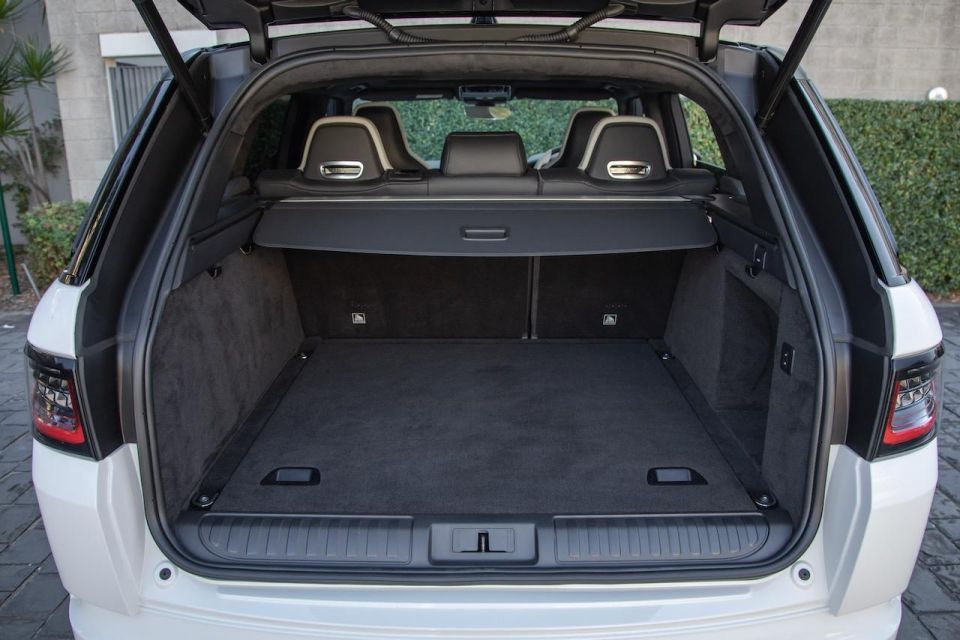


Boot space is also generous at 780 litres behind the rear seats, expanding to 1686L when folded flat (not completely flat though).
It’s also got a wide aperture for easy loading of larger boxes, or in my case, an MTB with 29-inch wheels, as well as golf clubs (at this stage only for the driving range) and surfboards.
That’s more luggage space behind the second-row seating than all its main rivals, including the Audi RSQ8 (605L), BMW X5 M (650L), and Mercedes-AMG GLE63 S (685L).
However, that real-world advantage is reversed when folded.

There are few, if any, engines that sound as good as that which lies under the bonnet of the Range Rover Sport SVR.
At full noise it’s enough to wake the dead, but even a moderate prod of the throttle is enough to unleash a dose of the 5.0-litre V8 engine’s 423kW/700Nm knockout punch.
It’s not the quickest performance SUV around, but 0-100km/h in 4.5 seconds isn’t exactly leisurely. Flat out you’ll be doing more than 280km/h.
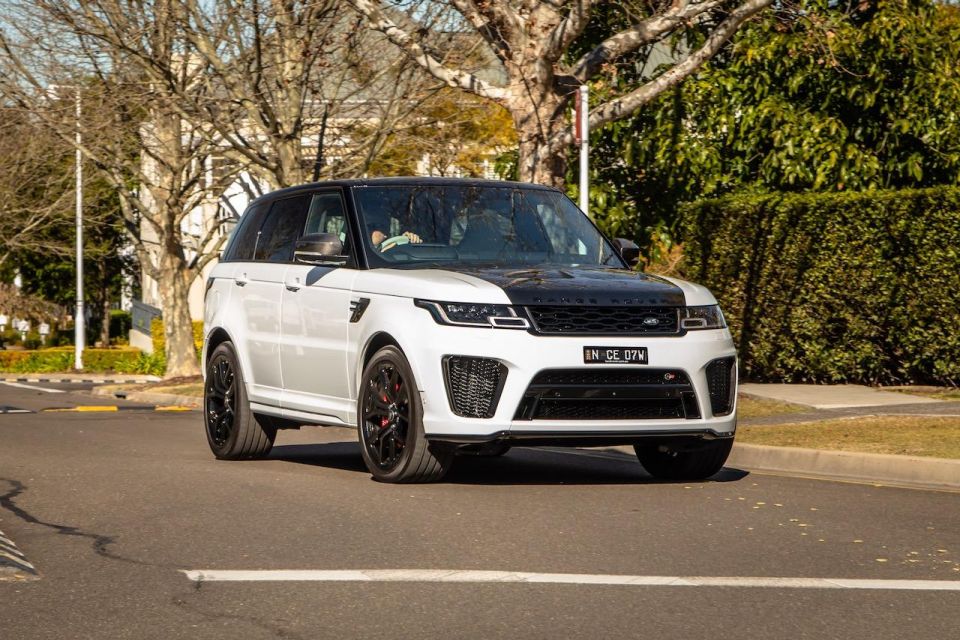
While it’s easily the oldest platform amongst a prized group of high-speed family SUV rivals, the Range Rover Sport SVR is also the one with the most linear set of controls.
It arguably provides the best balance between handling and ride for the daily commute of all of them, though. It’s that friendliness that’s always made the Sport a favourite amongst the more affluent suburbs in Australia.
For sure, the SVR is more highly-strung than its more sedate Sport stablemates and less understated thanks to its two-stage exhaust and bellowing exhaust note that’s all too easy to ignite, but it’s still one of the most satisfying and predictable from behind the wheel.
The all-round vision and trademark Command Driving Position provides the driver with fantastic forward and side vision, while placing the driver deeper into vehicle than some rival makes. It feels like you’re sitting as high as some truck drivers and yet, you’ve got the agility of a hatch and the comfort of a luxury limo.
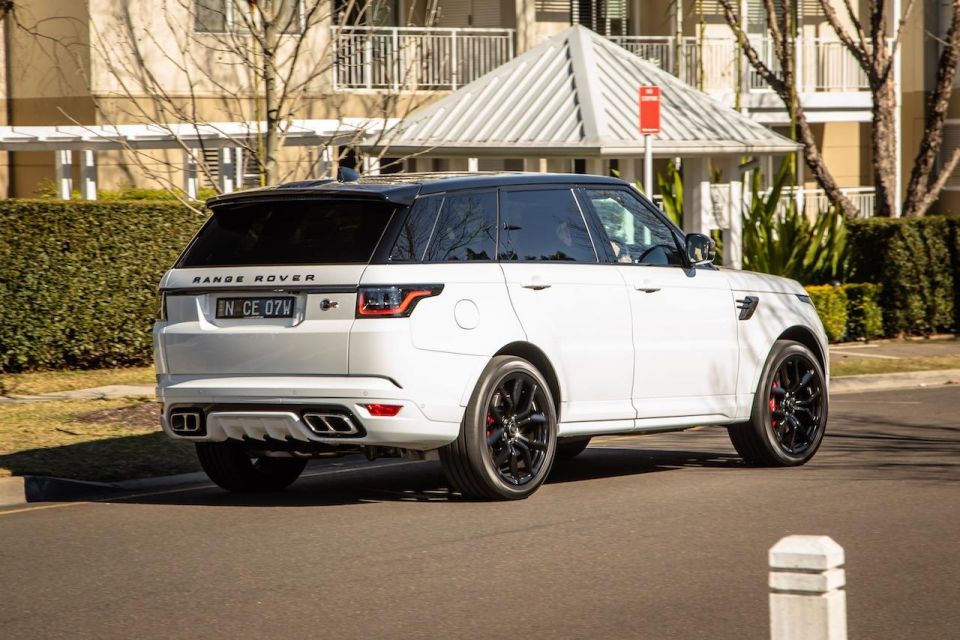
It’s interesting, but as much as you’ll want to give the SVR a proper shove from a set of traffic lights or punch it up a steep incline, I found myself just as content pottering around the local haunts while enjoying the ride comfort.
You’d never know you were riding on 22-inch wheels shod with low-profile tyres.
Don’t get me wrong, should conditions permit and you’ve selected the more focused Dynamic setting, you can string a series bends together with feedback and commitment. But when you come upon one of those super-size speed bumps, there’s no need to come off the throttle, the SVR simply crushes them.
Stopping power has always been uncanny on the Range Rover Sport, but the SVR dials it up to new heights, backed with superb pedal feel. It’s extraordinary for a vehicle tipping the scales at nearly 2.3 tonnes.
Need to navigate a fire trail to access a country weekender on a stormy winter’s day? The SVR has you covered, with a standard wade depth of 850mm, as well as an approach angle of 20.6 degrees, and departure angle of 23.9 degrees.
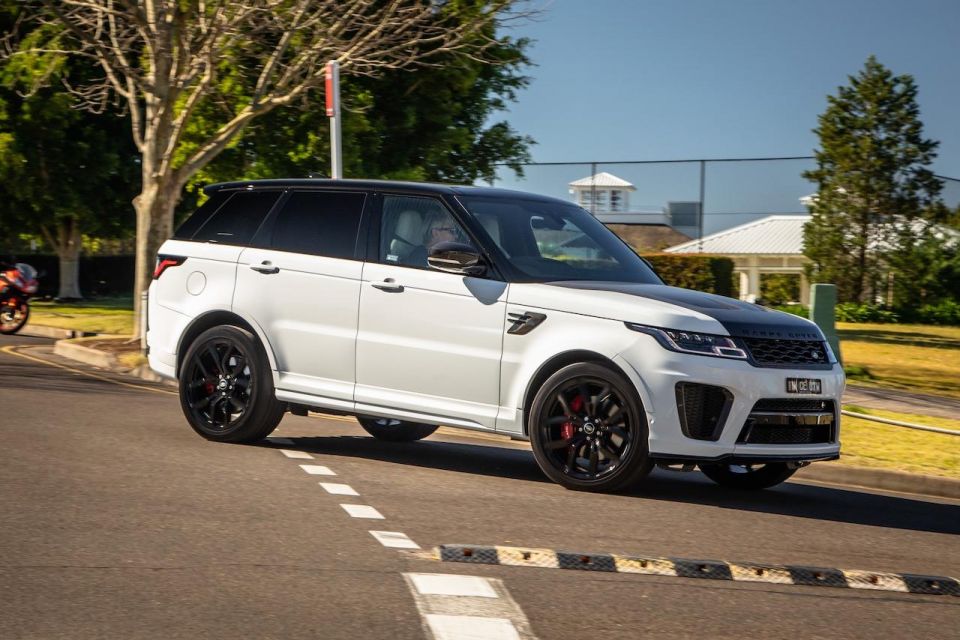
Where expert car reviews meet expert car buying – CarExpert gives you trusted advice, personalised service and real savings on your next new car.
While we didn’t get to try out its off-road skills during these COVID times, I’ve done plenty through rivers of mud in Scotland, and can attest to the SVR’s ability to conquer the rough stuff despite its more road-focused bent.
There’s nothing quite like it in the segment, though few owners will venture off the beaten track in their SVR.
It’s the same story for more mundane chores like towing a horse float or a fully-laden box trailer to the tip.
The SVR equals its regular petrol Sport siblings in this regard with a braked towing capacity of 3000kg, but makes do with a lower 120kg maximum tow ball download capacity, compared with 150kg on other grades.
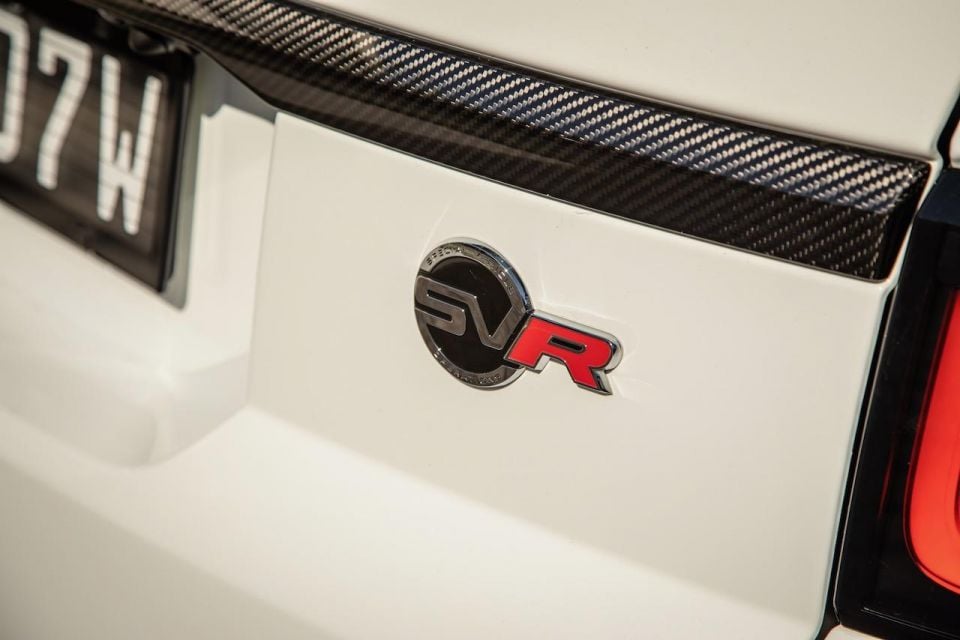
The entire Land Rover range is covered by a five-year/unlimited-kilometre warranty, along with five years of roadside assistance.
Buyers can also purchase a five-year/130,000km (whichever comes first) service plan for $3750 up front.
Land Rover recommends using Premium 95 RON premium fuel as a minimum in the SVR, and claims average urban fuel economy of 18.1L/100km or a combined usage of 12.8L/100km.
By the end of the week we were averaging as high as 28.9L/100km. Somewhere in the middle seems achievable, but there’s no question the SVR is thirsty.
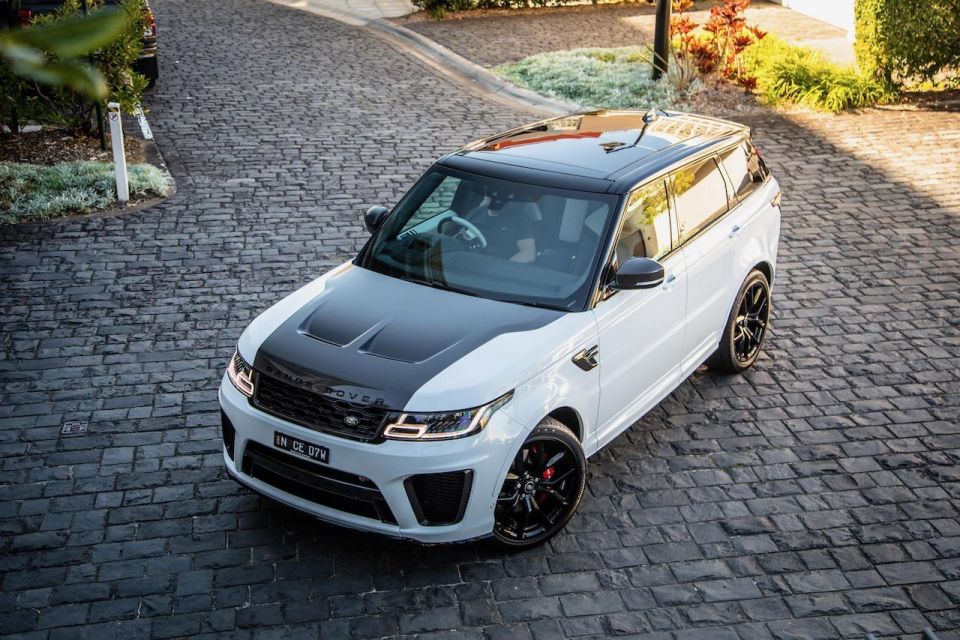
Despite its ageing bones, the Range Rover Sport SVR still carries enviable street cred. It’s also the most regal of what is a highly competitive set of go-fast family haulers.
It’s also the least powerful and slowest out of the gate these days, against a mighty onslaught of turbo-powered high-riders with more luxurious cabins boasting the latest technology for considerably less money.
With the next-generation Range Rover Sport likely to drop in 2022, heralding an entirely new look and technology, I’m not sure the final iteration of its most powerful variant makes the most sound fiscal sense – Carbon Edition or not.
Still, there may never be another Range Rover that sounds this good.

Click the images for the full gallery
Where expert car reviews meet expert car buying – CarExpert gives you trusted advice, personalised service and real savings on your next new car.
Anthony Crawford is a CarExpert co-founder and senior presenter with 20+years in automotive journalism and content creation.


Matt Campbell
2 Hours Ago


Max Davies
18 Hours Ago


William Stopford
18 Hours Ago


Derek Fung
18 Hours Ago


Max Davies
1 Day Ago


William Stopford
2 Days Ago